1 Composition of wind-solar hybrid solar street lamps
1.1 Wind Turbine Generator
Wind turbines can convert the wind energy in nature into energy and transmit it to the battery for storage.Wind turbines can be combined with solar panels to supply power.The wind-solar hybrid solar street lamps uses a wind turbine with an output power of 30 W and a maximum output current of 12 V.
1.2 Solar panels
Solar panels are key equipment in wind-solar hybrid solar street lamps, which convert sunlight energy into electrical energy and output it to the battery.Among various types of solar panels, there are common single crystal silicon solar photovoltaic batteries, polycrystalline silicon solar photovoltaic batteries, and amorphous silicon solar photovoltaic batteries.Solar panels are shown in Figure 1.
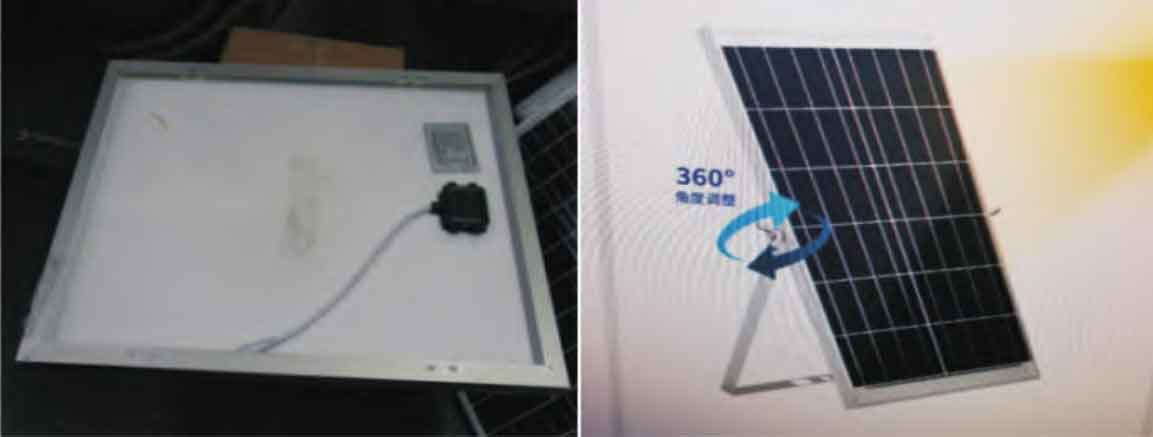
1.3 Solar controller
To increase the life of the battery, its charging and discharging requirements must be controlled to avoid damage caused by overcharging.High-quality solar controllers have temperature compensation functions on top of light and time control to adapt to various special environments, especially to increase lighting time in rainy weather.
1.4 Battery
Due to the extremely unstable energy transmission of traditional solar photovoltaic power generation systems, charging systems are usually required.The selection of battery capacity usually follows the following criteria: sufficient storage of the electrical energy collected by solar panels during the day on the premise of achieving nighttime illumination, to avoid the failure of wind-solar complementary solar street lamps due to continuous rainy weather.The battery is shown in Figure 2.
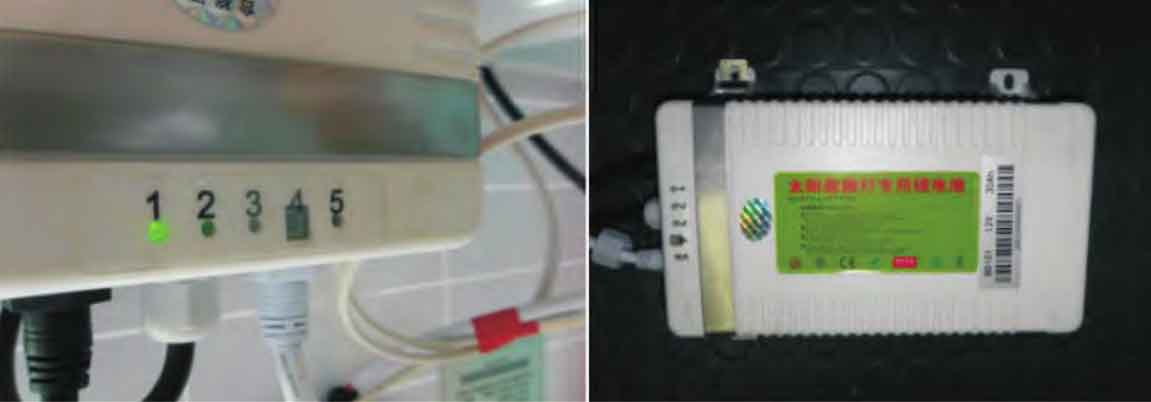
1.5 Lighting
Considering the harsh environment of offshore platforms and the installation location of wind-solar hybrid street lamps, low-temperature environmental protection lamps with a protection level of IP66 should be selected for lighting fixtures.IP66 refers to products that completely avoid the entry of external substances and can completely avoid the entry of dust, even if they are subjected to severe wave impacts without causing damage.The lighting fixtures are shown in Figure 3.
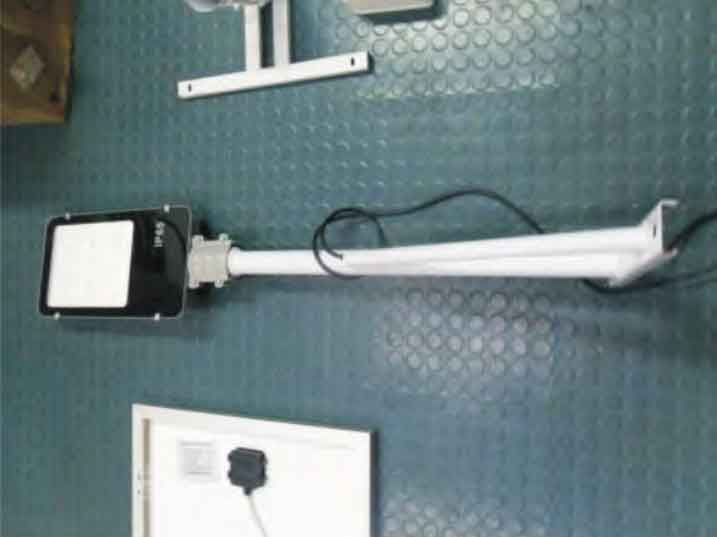
2 Installation method and precautions
① Install the battery bracket and battery.Fix the battery bracket behind the solar panel, install the supporting bolts in order, and then fix the battery on the bracket.The installation operation is shown in Figure 4.
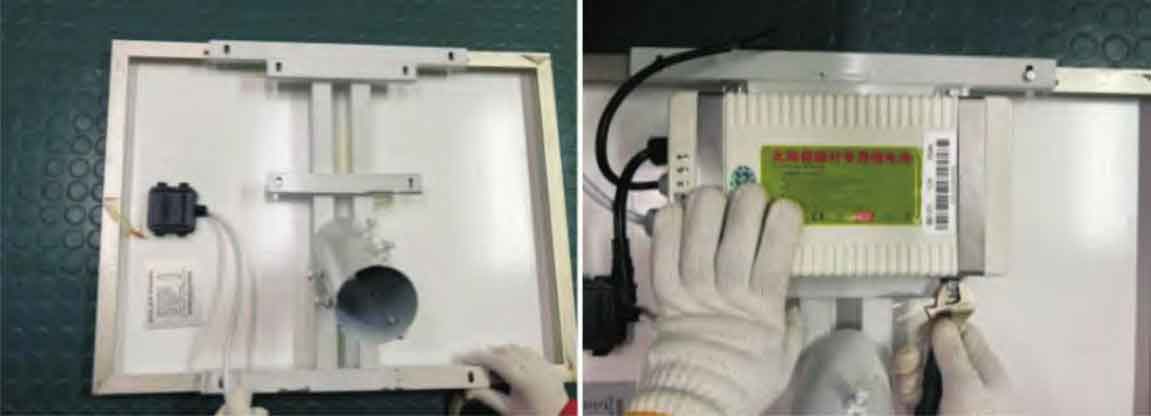
② Assemble the wind turbine.Install the blades in an orderly manner and secure them with the supporting bolts.The installation process is shown in Figure 5.Note: When installing the blades, pay attention to the direction of the blades to ensure that the six blades are installed in the same direction.

③ Install the L-shaped connecting rod of the battery bracket and route the wires inside the streetlight pole and the connecting rod of the battery bracket.Use a thin wire about 1 m long to pass through the inside of the L-shaped connecting rod, install the L-shaped connecting rod on the street lamp pole, and adjust it to the front of the street lamp pole’s reserved opening.The black wiring of the street lamp is threaded through the reserved port of the street lamp pole and out of the above-mentioned reserved port. Prepare 2 power transmission lines with a voltage of more than 220 V to penetrate through the top of the street lamp pole and exit through the reserved port. Use insulating tape to bind the black connector of the street lamp with two new transmission lines, and then use thin iron wire to wind and fix the connector, then adjust the direction of the L-shaped connecting rod, slowly move to the appropriate position, pull the iron wire at the other end of the L-shaped connecting rod until the black connector and the new transmission line go out from the other end of the L-shaped connecting rod, and use a spanner wrench to tighten the bolts on the L-shaped connecting rod to fix the L-shaped connecting rod on the street lamp rod.The installation operation is shown in Figure 6.Note: When threading a thin wire through the L-shaped connecting rod, one end of the thin wire can be tied to a weight such as a nut, which can be used to change the position of the L-shaped connecting rod using gravity, allowing the weight to drive the wire through the L-shaped connecting rod.
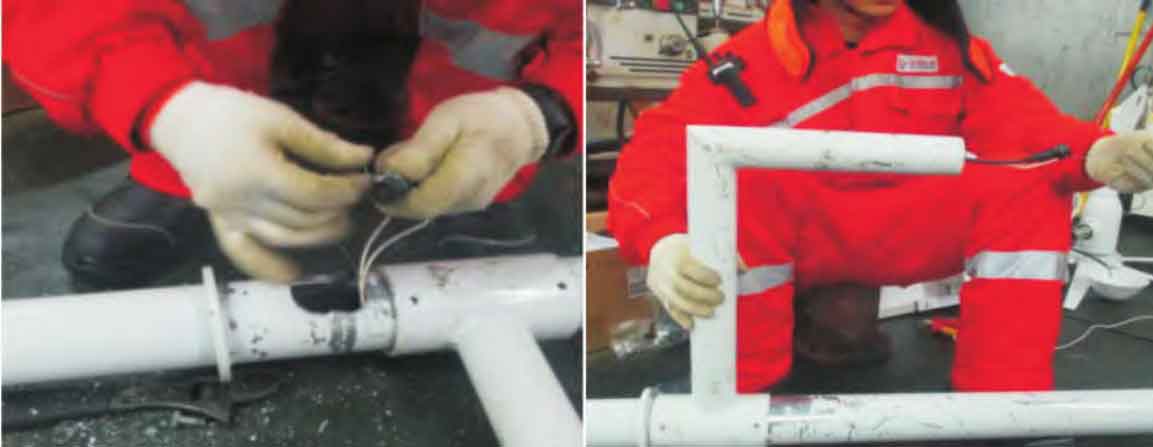
④ Install street lights, solar panel modules, and wind turbines.The installation process is shown in Figure 7.Note: When securing the L-shaped connecting rod to the solar panel module, be sure to first run the new wire through the bottom to facilitate subsequent wiring.

3 Electrical wiring
3.1 Wiring related to wind turbines
Connect the two power lines of the wind turbine to the newly added power lines, and connect the other end of the newly added power lines to the battery module.The relevant wiring is shown in Figure 8.
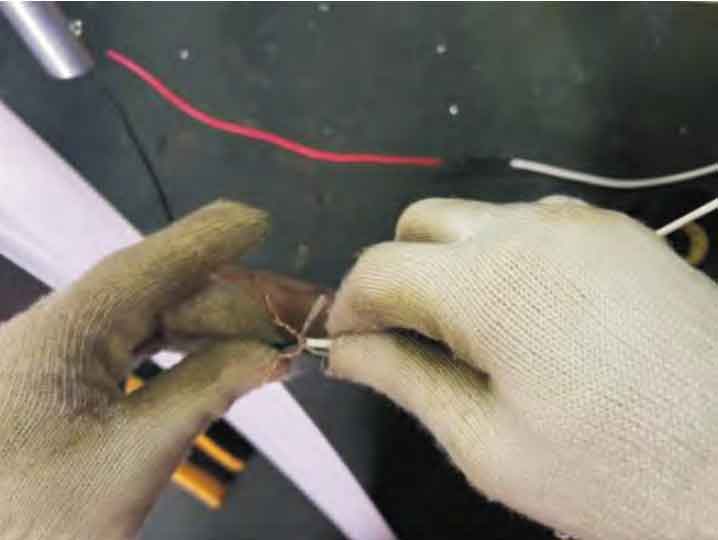
3.2 Wiring related to solar panels
The white plug is connected to the solar panel, the black plug is connected to the LED street light, and the black wire is connected to the windmill generator (brown to red, blue to black).The relevant wiring is shown in Figure 9.
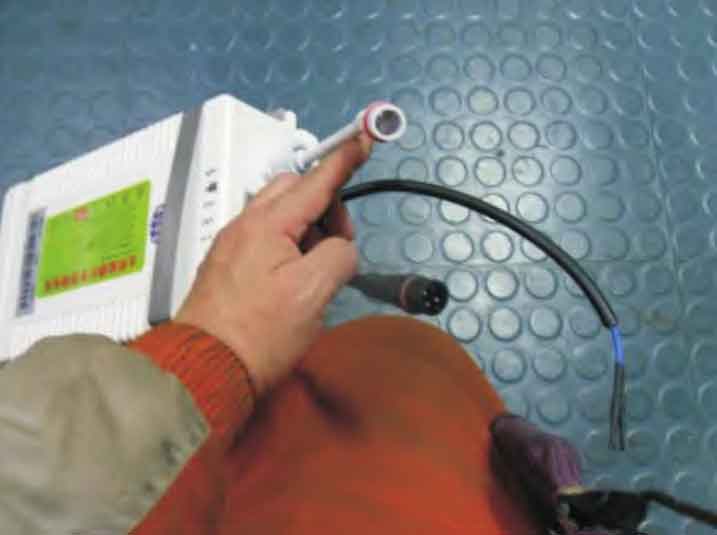
4. Routine maintenance
4.1 Maintenance of wind turbine generator
When inspecting the wind turbine blades, focus on the shape of the blades and observe whether there is a problem of blade breakage.Turn the blades by hand and observe whether they rotate smoothly and make any abnormal noise.An abnormal blade can cause inconsistent wind-sweeping areas, resulting in blade rotation and vibration, and an unsatisfactory state of wind power generation.At the same time, check whether the screws on the wind-solar complementary solar street lamps are loose or rusted, and regularly monitor whether the voltage at the output section of the wind turbine generator is stable and reliable.
4.2 Inspection and maintenance of solar cell modules
Regularly check the surface of the solar panel for any attachments that affect the light collection rate.After severe weather such as rain and snow, clean the surface of the solar panel in time. For difficult-to-clean stains, carefully wipe it with a special solar panel cleaner to prevent irreversible damage to the surface of the solar panel.At the same time, regularly check whether the solar cell components are normal, such as whether there are cracks on the surface of ultra-white glass and whether the electrodes are damaged or falling off, and use a multimeter to test the open-circuit voltage value and short-circuit protection current. Due to the long-term outdoor use of the lamp and the harsh marine environment, daily inspection of the sealing of each connecting part of the lamp is necessary. The poorly sealed parts should be promptly reinforced with silicone for sealing.
5 Advantages and promotion value of wind-solar hybrid solar street lamps
The on-site operation procedures for lighting engineering are complex, often requiring infrastructure such as laying concealed pipes, wiring inside the pipes, and backfilling the pipes, as well as a large number of manpower. Transformer equipment, distribution cabinets, distribution boards, and other large-scale equipment also require significant costs.However, wind-solar complementary street lighting is independent, without the need for cable laying and large-scale equipment, which saves labor and money. The damage of a single light does not affect the overall situation, and it is not directly affected by large-scale power outages.Because conventional street lights are connected by cables, they directly affect the operation of the overall power system due to various practical problems of individual ones.Wind-solar complementary power generation lamps will not occur this situation, using a distributed individual power generation control system, individual damage will not directly affect the operation of other street lights, even in the event of large-scale power outages, and the uncontrollable economic losses can be greatly reduced.At the same time, wind-solar complementary street lighting is managed by a smart controller, which can be divided into two automatic methods: time control and light control, with both safety and economic benefits.It is an independent and integrated power supply system, which is not affected by large-scale circuit structure construction, with simplified procedures, short construction period, and easy maintenance.
Compared to traditional street lights, wind-solar hybrid solar street lamps use the natural, pollution-free sunlight and wind power as their energy sources, without consuming other energy sources or directly or indirectly releasing polluting gases into the environment. This has a significant protective effect on the natural environment and avoids the cost of subsequent electricity expenses.
